The 19-year evolution of Steam
A visual history of PC gaming's most popular way to buy, play, and update games.
This week marks Steam's 19th birthday, and while it might be the face of PC gaming now, it didn't shoot to success overnight. The digital storefront has changed dramatically over the years, evolving from a simple portal for Counter-Strike 1.6 to a hub where you can buy games, review them, and even participate in their development—if you're not too busy selling hats, cards, and $400 knives in the marketplace. Let's turn back the clock and look at how far the ubiquitous platform has come.
2003: The beginning
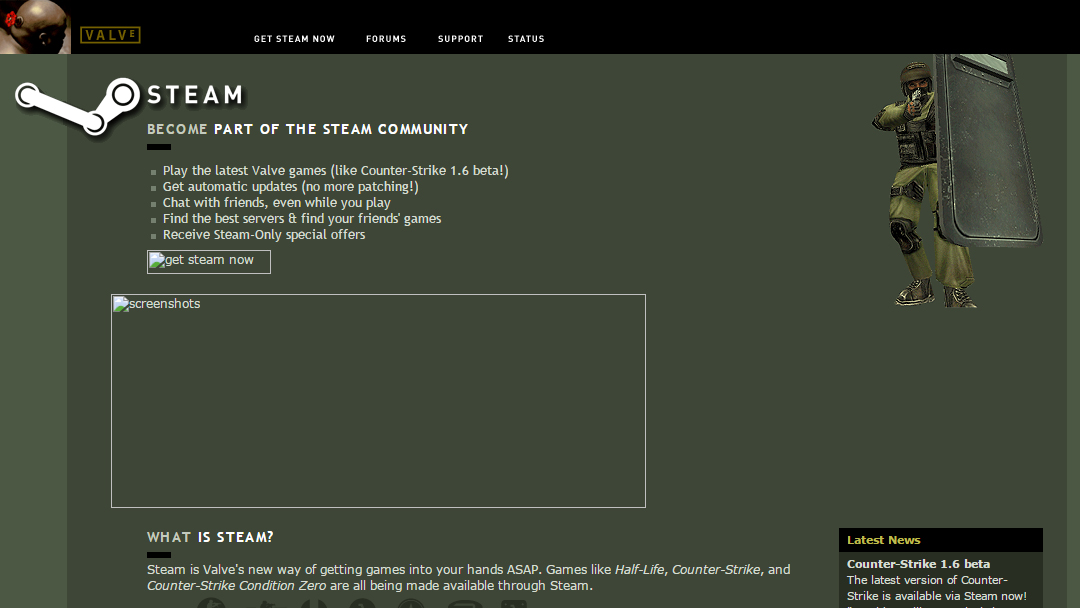
On September 12, Steam began life as a way for Valve to control the patching process for games like Counter-Strike, as well as curb cheating and provide easier access to any content the developer produced. All was not hunky-dory, though; many gamers saw Steam as a threat to PC gaming, requiring a constant internet connection at a time when only 20 percent of American households had access to broadband internet.
It didn't help that Steam's authentication servers struggled to cope with user demand, regularly locking players out of the games they had purchased. Add to that the slow download speeds, the clunky interface, and the frequent patching, and a lot of PC gamers were left with a sour taste in their mouths.
In the image above, Steam's narrow focus is immediately evident: The only games mentioned are Valve's own, and there is no way to purchase them from the site. The Steam client itself lacks a storefront, focusing entirely on connecting players rather than getting them spending.
2004: We all install Steam for Half-Life 2

The release of Half-Life 2 is arguably the reason Steam is what it is today, and the game's dominance of the storefront reflects that. Valve didn't want you to forget: To play the universally-acclaimed shooter, you had to sign up for Steam, even if you bought it in a box at the store. It was a landmark moment in the transition from the old model of digital ownership—CDs and CD keys—to the new one, where game licenses are tied to online accounts.
2005: A store emerges

In 2005, Ragdoll Kung Fu and Darwinia become the first non-Valve games to hit Steam. This was big news, marking the platform's shift from being a Valve game downloader and server browser to being a proper store.
2006: The library grows

Now we see Steam really starting to take shape. The then-novel concept of digital sale events is born, hinting at future memes involving our wallets. Free demos and HD videos join the catalogue. By the end of the year, there are almost 100 games available on Steam.
Keep up to date with the most important stories and the best deals, as picked by the PC Gamer team.
2007: A platform emerges
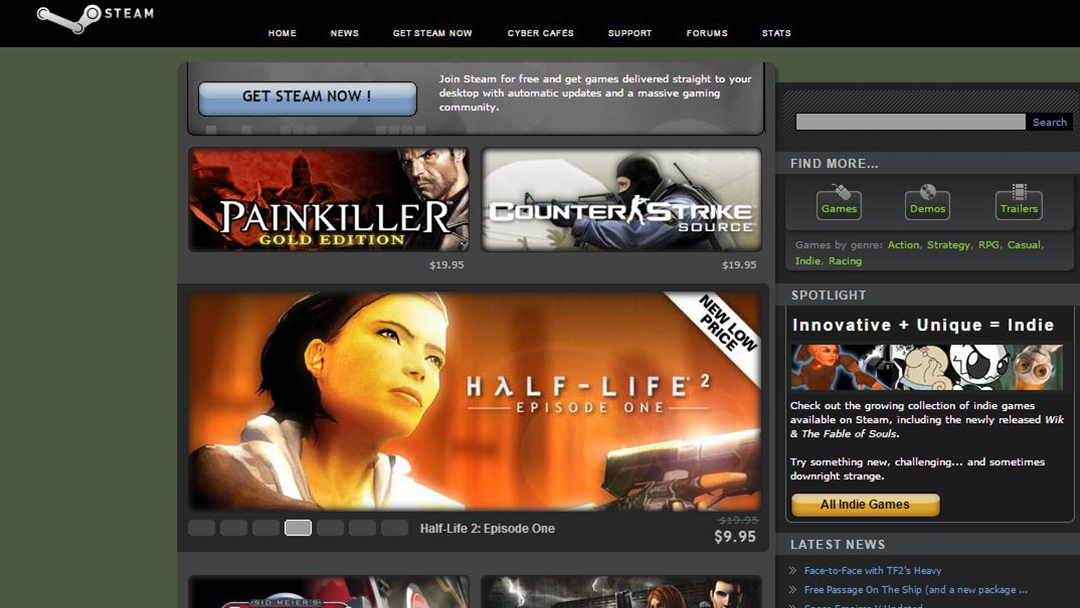
Proper search functionality, integration of Metacritic ratings, and filters like Top Sellers and New Releases make the Steam storefront a whole lot more usable.
Within the Steam client itself, the debut of the Steam Community platform brings with it many crucial features, including stat tracking, friends lists, community groups, and voice chat. Those features alongside the release of The Orange Box in October 2007 leave no question as to who is leading PC gaming; Valve and Steam are the center of the hobby.
2008: Quality of life features

Browse-by-genre links and a greater focus on the New Releases list make keeping track of Steam's ever-expanding catalogue slightly easier—there are over 1,000 games for sale on Steam by the end of 2008. The Spotlight feature, the image slideshow, and the large banner ad grant select games prime exposure to Steam's 20-million-strong user base.
On the software front, the rollout of Steam Cloud makes it significantly easier to play the same game across multiple computers, providing automatic synchronization of game saves, key bindings, and configuration settings.
2009: Backlogs begin

The addition of the Under $5 and Under $10 categories reflect Steam's budding reputation as a place for big discounts, impulse buys, and building a backlog of games you'll never play.
2010: Steady growth

Discounts are now presented as percentages, making it easier to spot a bargain. The Steam Stats activity graph reminds visitors just how big Steam is getting, while the addition of Mac games marks Steam's first push to expand beyond the Windows PC market. There are now around 3,000 products for sale on Steam.
2011: Steam Workshop is introduced

Steam introduces a recommendation widget to simplify discovery and combat the 'too many games' conundrum. (Oh, to be young and naive!)
In response to an increase in account fraud, Valve deploys Steam Guard, providing two-step login protection first via email, then later through the Steam mobile app. Modders, meanwhile, rejoice over the long-awaited arrival of Steam Workshop, which allows user-created content to be distributed directly on Steam.
2012: The year everything changed

In 2012, Steam got two massive additions that foreshadowed some of the best and worst aspects of modern PC gaming.
The first big event is the launch of Steam Greenlight, which allowed Steam users to vote on which indie game projects should be allowed to release on Steam. The system came about during the rise of Kickstarter and other crowdfunding sites, a time when appealing to 'the wisdom of the crowd' was popular. In the end, it was a half-step that Valve wasn't happy with: In 2013, Gabe Newell called Greenlight "a bad example of an election process." Later, Valve would get rid of Greenlight and replace it with Steam Direct, opening Steam to thousands of new games and leading Valve to create controversial new content policies and algorithmic discovery tools.
The other big event of 2012, and one of the most influential events in the history of gaming, was the launch of the Steam Marketplace, which allowed players to buy and sell in-game items for real money. The Marketplace complimented the crate and key systems in Team Fortress 2 and Counter-Strike: Global Offensive, which were early examples of loot boxes, one of the most controversial aspects of gaming in the 2010s. Use of loot boxes is declining among big publishers, but the Steam Marketplace reflected a huge fundamental change in how people and publishers think about how we pay for games and the nature of in-game items. Only six years earlier, the Oblivion "Horse Armor" DLC had been controversial, and now we were buying and selling virtual hats. Valve arguably built an NFT-like system before NFTs. (It wasn't just Valve: Diablo 3 and its auction house also launched in 2012. As for loot boxes, the concept existed well before videogames did.)
In much smaller 2012 Steam news, the growth of "DLC" sees the addition of a Downloadable Content filter to the New Releases list (even though everything on Steam is downloadable) as well as DLC and Demo labels added to the top-left corner of game thumbnails. Valve also released the first Steam mobile app, enabling chat, purchases, and remote game installation on-the-go.
2013: User reviews, Early Access, and the living room

2013 is a big year of many little additions. In advance of SteamOS, Linux support comes to Steam, taking over Mac's slot on the navigation bar and earning itself a tab on the Featured Games widget. Big Picture mode arrives, too, the harbinger of Valve's ambitions to enter the console-dominated living room. Experimentation continues with the advent of Early Access, though its initial niche appeal limits its prominence to an announcement banner and a new search category. 2013 also sees the arrival of Family Sharing, permitting users to share their games library when it's not in use.
Another big addition is support for user reviews of games, complementing the existing Metacritic scores. It isn't long before "Steam review bombing" becomes a thing. (In 2019, Valve started showing us when a game's user review average suddenly shifts.)
User profiles also expand with an RPG-like leveling system, partly intended to stimulate community behaviour like trading items and posting reviews.
2014: The Discovery Update
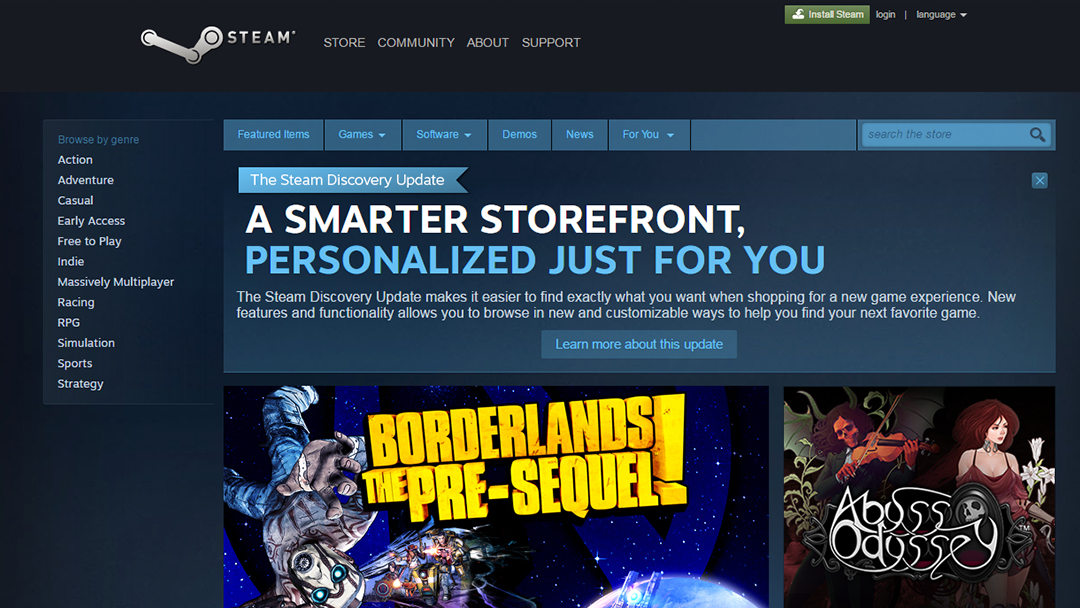
2014's biggest change comes at the end of the year: The Discovery Update, which more or less introduces the design we know today. Personalized recommendations adorn the front page, from Steam's own Discovery Queue to the suggestions of popular community Curators.
Also in 2014, the introduction of the Recently Updated widget reflects the shift from games as products to games as a service. Linux concludes its short stint on the navigation bar—not surprising, given the lukewarm response to SteamOS—and the addition of Steam In-Home Streaming transforms laptops and tablets into wireless monitors for a high-end PC, and foreshadows internet game streaming services like Stadia.
A related feature, Broadcasting, offers a built-in alternative to Twitch, allowing Steam users to watch their friends play and share their own gaming sessions. That still hasn't taken off, but the Remote Play Together system introduced several years later is pretty cool when it works.
2015: Paid mods
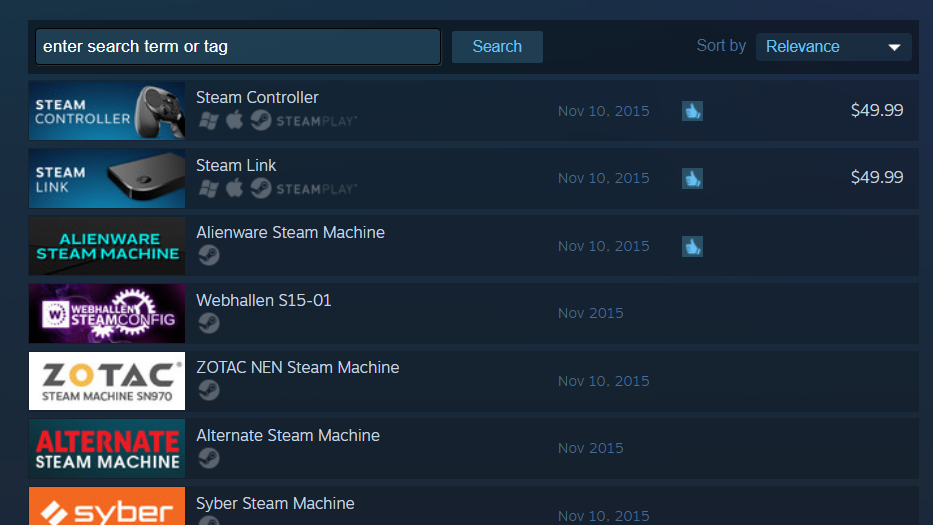
2015 is the year that Valve and Bethesda team up to try a new idea: paid mods on the Steam Marketplace. A few days later, Valve and Bethesda decide that suddenly rolling out paid mods on the Steam Marketplace was a big mistake, and chuck the whole idea in the trash.
This year Valve also adds a hardware section to support the Steam Controller, the Steam Link, and Steam Machines. RIP to all that, but despite its failure to really start something with its living room hardware push, we're glad Valve didn't give up on physical products.
2016: Virtual reality
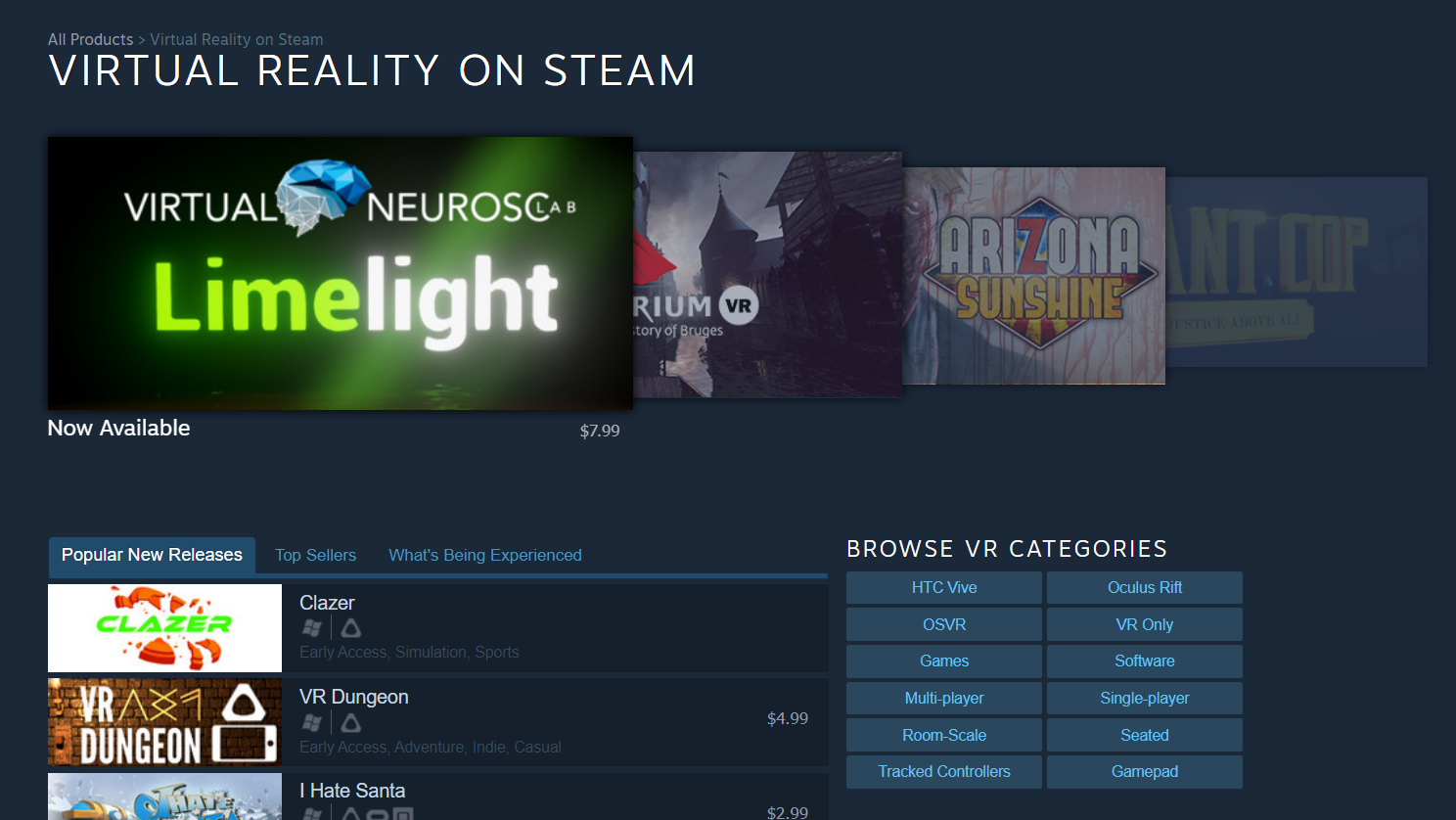
In 2016, Valve introduces a VR category to accommodate the release of the Oculus Rift and the HTC Vive. We also learn more about its rules for early access games—just the fact that we're curious about them speaks to how different things are in 2016, when early access is still a controversial topic.
2017: Steam Direct is introduced

In 2017, Valve fundamentally changes the nature of Steam when it retires Greenlight and replaces it with Steam Direct, which allows anyone to submit a game to the store, no community approval required.
2018: Steam sells adult games now?
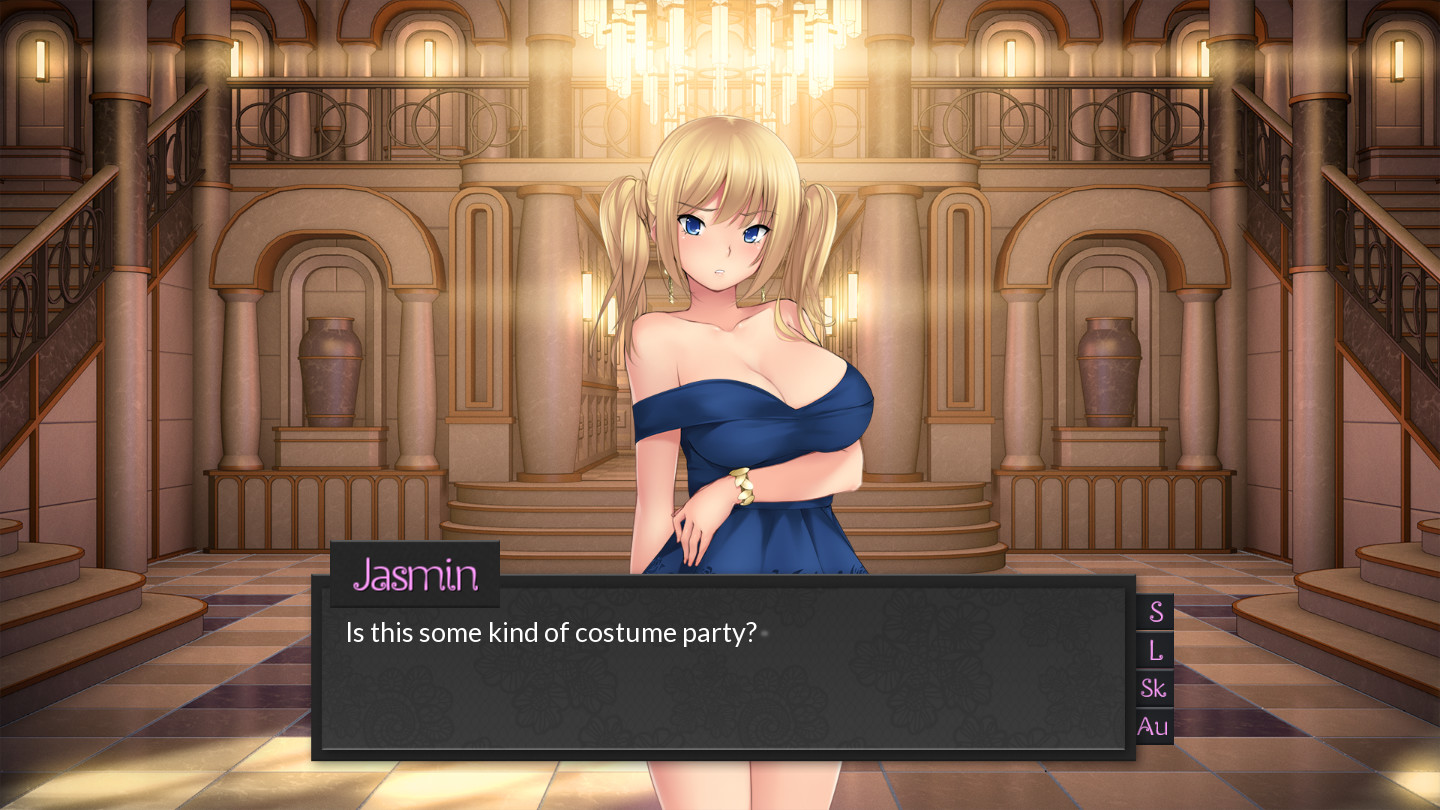
With the creation of Steam Direct, Valve moved toward a vision of Steam as a laissez faire marketplace, but the system itself wasn't enough—Valve had to eradicate the idea that certain things deserve to be on Steam, while other things don't. Whether or not it went too far in that respect has been a matter of much debate.
The Steam submission guidelines Valve introduces in 2018 are extremely permissive. A few years earlier, no one would have believed you if you'd said Valve was going to start selling porn games, but that's what it does in September of 2018. Steam is now a popular source for adult games, which are permitted under Valve's two broad restrictions: nothing illegal and no "trolling."
Valve actually does apply other restrictions that have become apparent over time—for instance, adult games can't use likenesses of real people—but it has stuck pretty close to the hands-off policy it started with in 2018.
In 2017, Valve also pushed harder into the livestreaming space, including developer streams on game pages, and soft-launching Steam.tv—not much has come of that yet, but it could be important in the future.
2019-2022: Epic's challenge and the Steam Deck
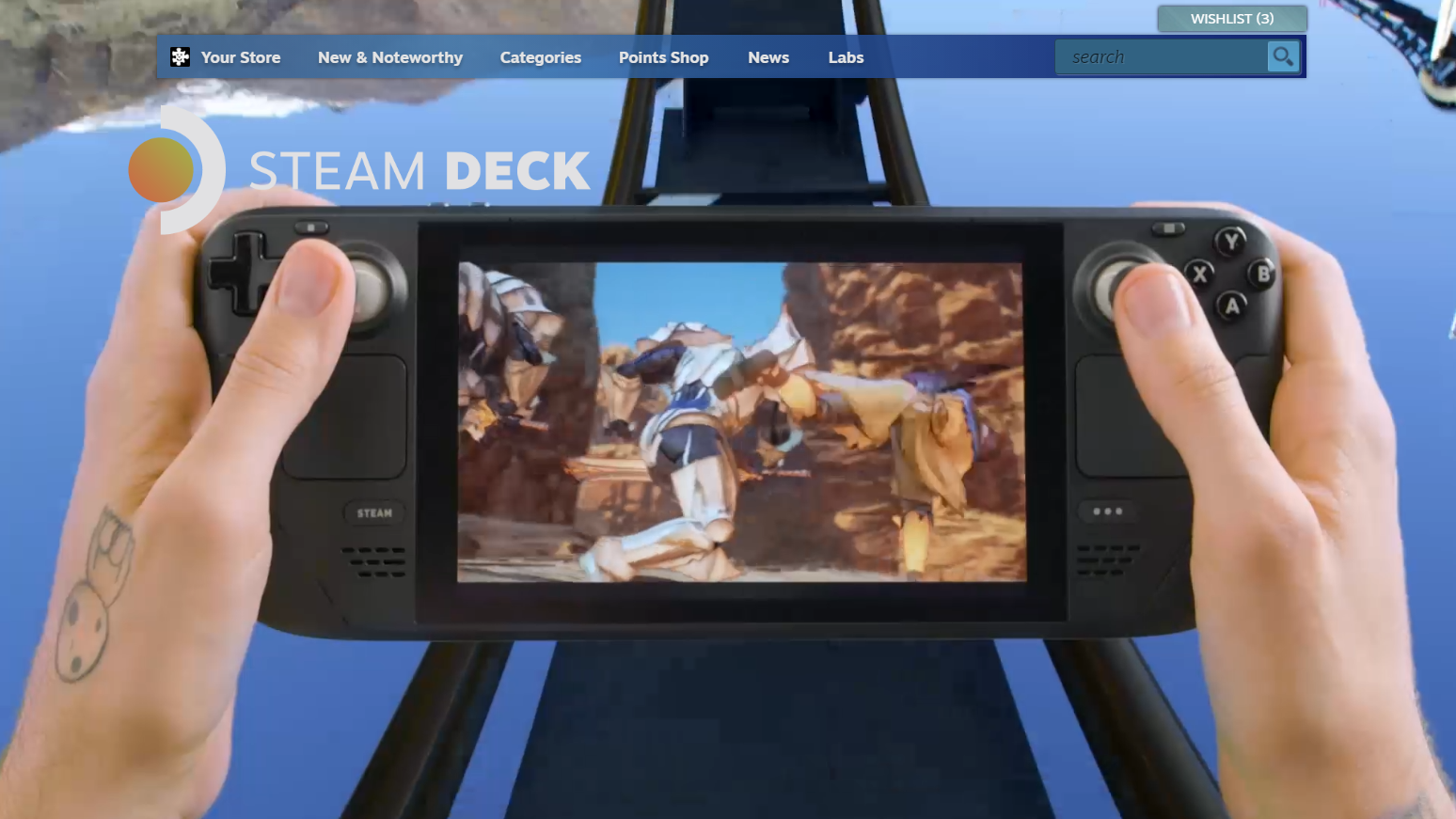
Valve's idea to make a Linux-based ark for PC gaming (just in case Microsoft ever got too greedy) has faded into the background, but it kept working on SteamOS, and little did we know that it was planning to use it for the Steam Deck, a handheld PC gaming device that put Valve back into the hardware game—we really like it.
Steam has also gotten some nice feature upgrades over the past few years, but the really big news happened off of Steam: The launch of the Epic Games Store at the end of 2018, and Epic's policy of paying advances to developers who agreed to year-long exclusivity deals that temporarily kept their games off Steam.
The Epic Games Store was a direct challenge to Valve and other game distributors: Epic CEO Tim Sweeney declared that the standard 70/30 cut was outdated and arbitrary, and that Epic was offering a fairer deal by only taking 12% of revenue from game sales, leaving 88% for the developer or publisher.
In 2020, Gabe Newell said that "everybody benefits" from competition, and Steam tweaked its terms a little, lowering its cut for publishers that earn over $10 million. It was a barely-noticeable response to Sweeney's challenge. Today, we take for granted that some games will release on Steam a year after they come out on the Epic Games Store, but it's not clear this has dramatically affected Steam's bottom line. In recent years, Microsoft and EA both resumed releasing games on Steam, which must have helped balance out the loss of certain Ubisoft launches.
Things move fast on the internet today, and while the Epic Games Store is now fairly well-established, its threat to Steam already feels like yesterday's news. If I were Gabe, I'd be much more interested in Microsoft's PC Game Pass subscription service. Valve currently has no plan to start a subscription service of its own, but that could change as Steam enters its twenties.

